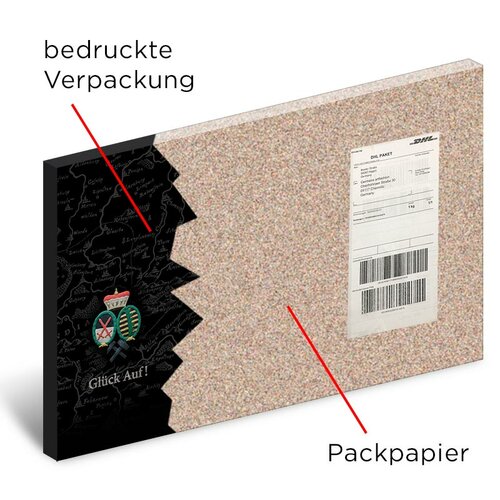MINING CALENDAR 2024
Mining in Saxony and Bohemia since 1993
https://www.youtube.com/embed/dVsNt8mkZNU
In the video, the new 2024 mining calendar is presented in Detail.
The Original Saxon Mining Calendar has been in existence since 1993, documenting the impressive underground world of the Saxon and Bohemian mining region with wonderful large-format photographs. Geologists explore the subterranean tunnels, capturing with photographs the mysterious places that brought work and prosperity to people centuries ago. Many tunnels and routes no longer exist, especially due to closures in the 1990s. Only the photographs remain, telling the stories of these special places.
The Original Saxon Mining Calendar is a unique wall calendar that has delighted those interested in historical mining since 1993. Many former miners from all over Germany and abroad find great joy in this wall calendar, and it's no surprise that this mining calendar is eagerly awaited every year.
In recent editions, we have doubled the number of sheets in response to customer requests. Each month now has two monthly sheets, one for each half of the month. This sets our mining calendar apart from others with similar themes, making it very affordable and entertaining.
Companies and associations can order the mining calendar from 10 pieces with their individual advertising. This provides a special gift for the New Year for customers, employees, business partners, or club members. You can order these unique promotional items in the advertising calendar category.
Mining in the Ore Mountains
The Ore Mountains region is significant economically, culturally, and politically. This is mainly due to the wealth of ore and the resulting mining operation, which has shaped the landscape and culture of the region for centuries. The mining operation influenced not only the economic and cultural development of Saxony and Bohemia but also other mining regions nationally and internationally.
The Ore Mountains are Rich in Mineral Resources
The Ore Mountain region has always been known for its wealth of mineral resources. Since the mid-15th century, more and more miners have sought silver ore. Abundant deposits discovered in 1470 in Schneeberg, 1491/92 at Schreckenberg, and 1516 at St. Joachimsthal led to a tremendous boom in silver production in the Ore Mountains. Numerous new mines were quickly established, leading to an unprecedented rise in mining in the region. Tin, silver, lead, iron, cobalt, uranium, and nickel were not the only metal raw materials mined in the Ore Mountains. Lime, kaolin, clay, and coal were also part of it.
Mining Succumbs to the Thirty Years' War
The Thirty Years' War had tragic effects on the economy and society in the Ore Mountains. Many cities and mines were destroyed or could no longer be maintained due to the war. The destruction of mining and smelting plants, as well as the siege and arson of numerous mining towns, largely brought mining to a standstill.
Revival of Mining and Foundation of the Mining Academy in Freiberg
Ore Mountain mining experienced a new heyday from the mid-18th century. Although the miners in this fourth main period failed to achieve the yield of the 16th century, the foundation of the Mining Academy in Freiberg in 1765 played a significant role for the entire mining region. The academy remains a world leader in research and development. In the 18th century, the Schneebergers were the European market leader in cobalt blue production. Today, the Schneeberg mining area and "Schindler's Werk" are a memorial to this time. Cobalt blue played a role not only in Meissen porcelain production but was known and traded worldwide.
Uranium Mining for the Soviet Union
After the Second World War, it was not only the Bohemian but also the Saxon uranium ore deposits that were of high strategic value for the Soviet Union. An intensive search for uranium in the Saxon Ore Mountains began immediately after the end of the war. Until the turn of 1989, large quantities of uranium were mined in the Ore Mountains, and mining retained its important position Overall.
World Heritage Site Montanregion Erzgebirge/Krušnohorí
The cross-border World Heritage Site Montanregion Erzgebirge/Krušnohorí is unique and fascinating. Consisting of 22 sub-areas, 17 in Germany (Saxony) and five in the Czech Republic (Karlovy Vary, Ústí nad Labem), it has been an impulse generator and engine for economic and social development in the region and on the entire European continent since the Middle Ages.
Mining has significantly shaped the appearance of the Ore Mountains, and this is still clearly recognizable today at the many different places encompassed by the World Heritage Site. These include water management systems for power supply in the mines and drainage, ore processing, roads, rails, canals, ore processing, and smelting sites. An impressive variety that one should definitely visit!




